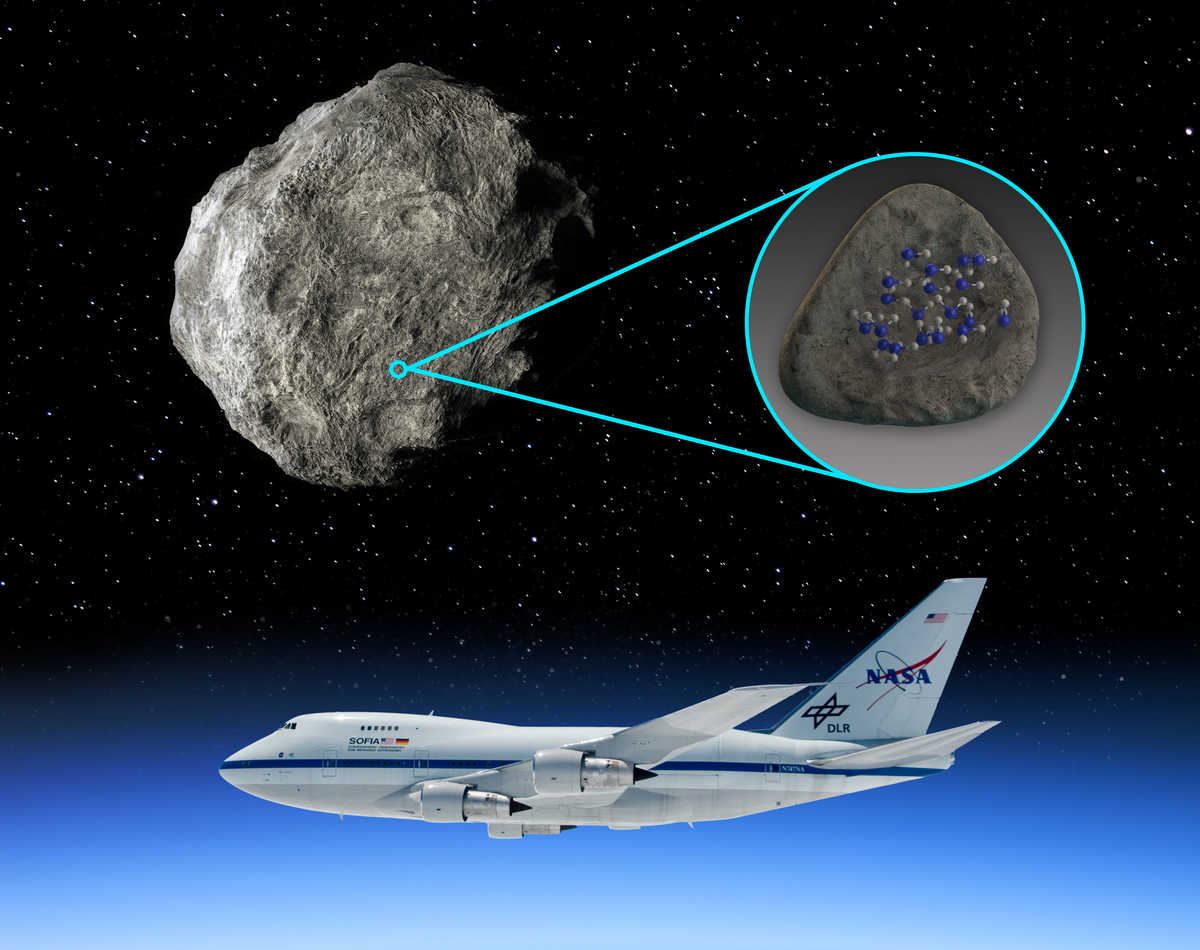Our Solar System is a collection of objects from planets and moons to comets and asteroids. It’s thought there are upwards of 1 million asteroids orbiting the Sun and it was thought that any water present on them should have evaporate long ago. A recent study using data from the SOFIA infrared telescope discovered water on the asteroids Iris and Massalia.
Among the million or so asteroids, Iris is 199 km in diameter making it larger than about 99% of other asteroids. It orbits the Sun within the asteroid belt between Mars and Jupiter at an average distance of 2.39 astronomical units taking 3.7 years to complete one orbit. Massalia is of comparable in size to Iris coming in at 135 km across and shares an orbit similar to that of Iris.
Asteroids across the Solar System vary a little in composition and structure. Nearer to the Sun the Silicate asteroids devoid of ice dominate yet further out, icy asteroids are more common. Exploring the distribution of the asteroids helps to understand the composition and transfer of elements in the solar nebula before the planets and asteroids formed. If we can also understand the distribution of water too in our own system then it will help us to understand its prevalence in exoplanetary systems and the liklihood of extraterrestrial life.
Data captured by SOFIA – the Stratospheric Observatory for Infrared Astronomy which retired in 2022 – has revealed water on asteroids Iris and Massalia. It’s not the first time SOFIA has made a discovery of this sort. Back in October 2020 SOFIA identify water on the Moon. Using its Faint Object InfraRed Camera (FORCAST) it detected the signature of water molecules on the surface equivalent to about 350 millilitres of water in a cubic meter of soil.
The lead author on the paper, Dr Anicia Arredondo from the Southwest Research Institute confirmed that, based on the strength of the spectral lines, the volumes and prevalence of water on the asteroids was consistent with that found on the Moon. Here too it was locked up, bound to minerals as well as absorbed by silicates.
Data was also analysed from two fainter asteroids, Parthenope and Melpomene, but there was too much noise to yield a conclusive result. It appears that the FORCAST instrument lacks the necessary sensitivity to identify the spectral feature of water on these asteroids, if indeed it was present.
Further analysis is required to fully understand the distribution of water across the Solar System but following on from the study, the team will now utilise the James Webb Space Telescope which has higher quality optics and a much better signal to noise ratio to learn more.
Source : SwRI Scientists Identify Water Molecules on Asteroids for the First Time

